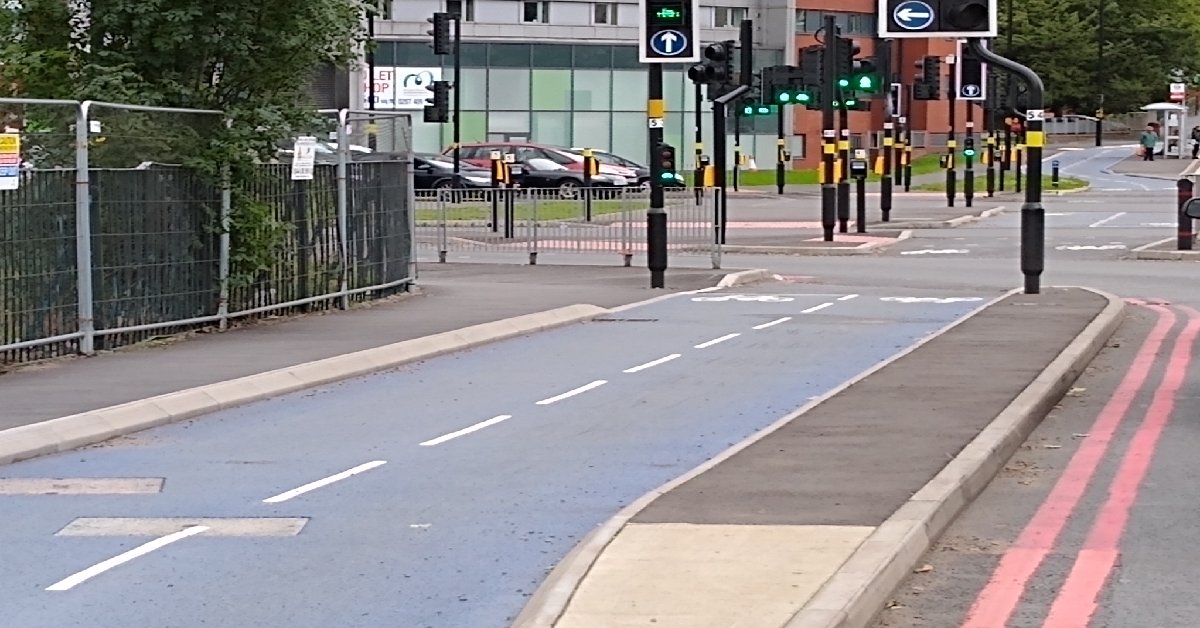Birmingham City Council has invited local cyclists to try out some of the new ‘pop-up cycle lanes’, delivered as part of the first tranche of the Government’s Emergency Active Travel Fund allocation.

The schemes are part of a package of active travel measures developed with Transport for West Midlands (TfWM) through the council’s Emergency Transport Plan; which sets out Birmingham’s emergency transport response to Covid-19 and ways to keep the city moving in a safe, low-carbon way.
The new pop-up cycle lanes will help connect with existing cycle infrastructure, to key employment sites and other major destinations, including the city centre. They form a critical part of Birmingham’s emergency response, allowing people to move around the city in a socially-distanced way and avoiding further impact on the environment.
Members of the Birmingham Cycle Revolution cycling stakeholders’ group were invited in groups of up to six to review the new routes last week, which include:
Bradford Street: Improving cycle access in Digbeth and the city centre and connect with the new A45 route
City Centre to City Hospital via Jewellery Quarter: Enabling cycling along this route linking the Harborne Walkway and mainline canal at Northbrook Street to the City Hospital on Dudley Road, and via the Jewellery Quarter to the city centre
A38: Connecting Selly Oak local centre with the popular A38 blue cycle route, which links the University of Birmingham and Queen Elizabeth Hospital to the city centre.
A47: Improving connections between the city centre, Aston University and Birmingham City University and east Birmingham and existing links to Fort Dunlop, Castle Bromwich and Castle Vale
A45: Providing a safer, parallel route to the A45 between the city centre and Small Heath local centre
Birmingham City Council had also started work on installing a pop-up cycle lane on Brassington Avenue in Sutton Coldfield, set to be operational from 18 September. The scheme was deemed a critical element of keeping Birmingham moving and ensuring a green recovery from Covid-19 and designed to all required safety regulations. However, following a mixed response from the local community, including concerns from the Sutton Coldfield BID and representations to local MPs, work on the scheme stopped on 7 September and the lane will shortly be removed at the request of Sutton Coldfield Town Council.
Cllr Waseem Zaffar MBE, Cabinet Member for Transport and Environment at Birmingham City Council, said: “Covid-19 has had such a negative impact on Birmingham, and it is vital that we respond to it with solutions.
“Our city already has dangerous levels of air pollution, we cannot allow to the pandemic to make this problem even worse. That is why we must implement changes now to make cycling a viable and safe option for everyone.
“We have delivered these cycle lanes in an incredibly short timescale. I urge the people of Birmingham to find ways to use them instead of private car – particularly for those shorter journeys. Cycling is not just a fantastic way to keep fit, it is an ideal mode of transport to maintain social distancing and reduce your carbon footprint.
“In Birmingham, over a quarter of all car journeys taken every weekday are under one mile long. If people walked or cycled these journeys instead – even for just a couple of days a week – we would see a significant difference in terms of air pollution and congestion.”
Dene Stevens, Bike Life Project Manager at Sustrans tested out the Bradford Street and A45 route, said: “The new protected lanes along Bradford Street and Bolton Road make large sections of a cycle trip from Small Heath to the city centre (and places in between) so much more comfortable and enjoyable.
“They also feel good because they go directly towards the centre, along streets with people around, but are sufficiently separated from Digbeth and the Small Heath Highway to avoid the worst of the air pollution found on busier roads. There is still work to be done with clearer signage and ground markings to help people follow the route more easily, especially around the Bordesley Middleway area, but the main sections are now in place. It was also good to see more people using other routes like the A34, now these are becoming better known.”
The schemes, delivered through the Emergency Active Travel Fund, are temporary, trial measures. Feedback from last week’s reviews, and comments from other users, will help modify the schemes where necessary and also inform design of future schemes.




